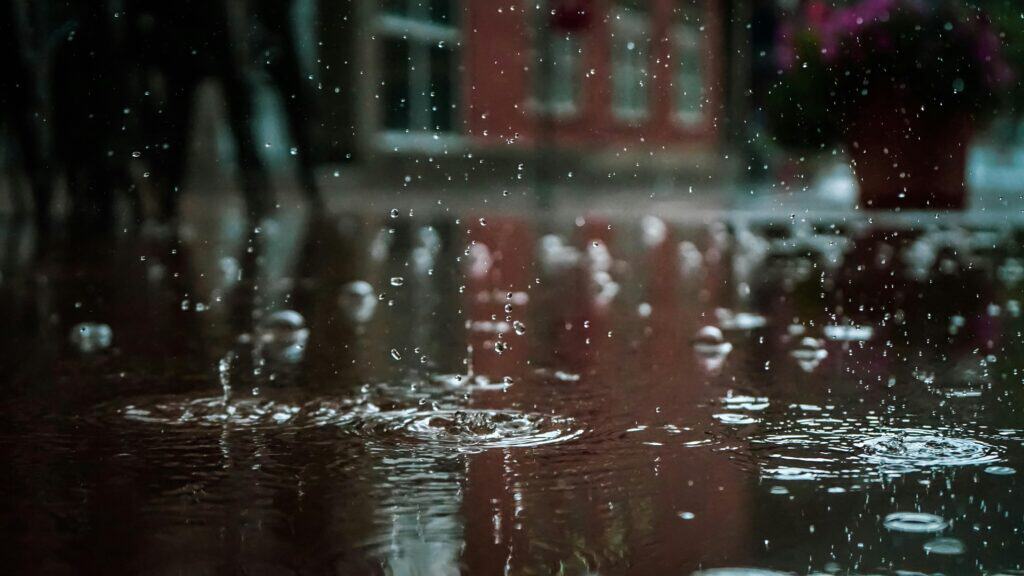Dealing with water damage is a common yet annoying occurrence in most households. If you’re in this situation, it’s crucial to understand the extent of water damage and how to rectify them efficiently.
The urgency can’t be understated – if overlooked, prolonged water exposure can weaken your home’s structure and cause long-term problems.
Apart from the sudden natural disasters, everyday issues like burst pipes, sustained leaks or malfunctioning appliances may also lead to significant water damage.
What’s worse?
They don’t come with a warning. However, taking immediate action can help mitigate the harm and safeguard your space.
To battle these unexpected situations, get expert help to restore your home in no time. For reliable service, visit their website.
Causes of Water Damage
Water damage in your home can strike at any time and differ greatly in severity. It may be surprising that the causes can be both external and internal.
Natural Disasters
The fury of nature in the form of massive rainfall or flooding from hurricanes leaves homes affected dramatically. These disasters create instant water damage.
Floods are especially destructive, swamping everything with water, engulfing your prized possessions, and wreaking havoc on your home structure.
Poorly maintained infrastructure
At other times, water damage can stem from neglected pipes. Leakages and burst pipes can steadily cause a build-up of moisture within your home.
Prolonged contact with humidity rots wooden structures, forms molds, and leads to structural instability. Thus, routine maintenance checks can significantly prevent water damage.
Improper Drainage Systems
Drainage issues in your home are another culprit. When the rainy season hits, inadequate drainage systems can result in localized flooding.
Basements and gardens are particularly vulnerable to this form of damage. Poor drainage leads to soil erosion and waterlogged grounds around your property.
Rapid Temperature Changes
Lastly, rapid temperature changes contribute to the causes of water damage in your home. Severe thawing after snowy winters may push water into the basement or foundations.
Preventing Water Damage
A small drip might not seem serious, but they can lead to expensive issues down the line. The excess moisture can cause damage to your home.
Water that goes undetected can encourage growth of mold and other harmful bacteria. In concealed areas such as behind walls, this can worsen medical conditions like allergies and asthma.
- Inspect common water sources like toilets, faucets, appliances, pipes and roofing for any possible leaks.
- Monitor your water bill regularly or contact your water company to check for an unexpected increase. This could indicate a hidden leak.
- Schedule routine maintenance checks for interior fixtures such as faucets and heaters, as well as exterior components including roofing and gutters.
- Install a water leak detection system. These systems not only alert you if there’s a leak detected, but some can even shut off the water supply immediately.
Toilets are notorious for leaks. To detect one, add several drops of food coloring in the tank. If color appears in the bowl within 10 minutes, you have a leak.
Drips from a faucet or showerhead can waste up to 3,000 gallons of water annually. Inconsistent water pressure is another indicator of a potential leak. State Farm suggests calling in a professional if you notice these issues.
Beware of older appliances. As they age, the chance of them developing leaks increases. Regularly check water supply hoses on washing machines and dishwashers for any signs of leakage.
Water damage can be expensive and disrupt your everyday routine. But with regular checks and maintenance, you can drastically reduce the chances of experiencing it.
Immediate Steps Post-Damage
Experiencing water damage can be daunting and panic-inducing. You may feel overwhelmed, but there are specific steps to manage the situation effectively.
What Should I Do First After Water Damage?
Immediately stop the source of water if possible. Then, ensure your safety by turning off the electricity in flooded areas before contacting professionals.
When Should I Contact a Restoration Company?
You should call a restoration company as soon as possible. Quick response minimizes additional damage, reducing repair costs and recovery time.
Can I Start Cleaning Up While Waiting for Help?
Absolutely, start by removing valuable items from affected areas. Be cautious not to expose yourself to contaminated water or structural instability though.
Should I Document the Damage?
Yes, taking photographs or recording videos can be extremely useful for insurance purposes, demonstrating the extent of the damage effectively.
What Can I Expect from Professionals?
Restoration experts initially assess the damage, then implement a tailored action plan to dry out, clean, and repair your home effectively.
Emergency Water Removal
Upon confronting water damage, the immediate task is availing emergency mitigation services. This includes restraining the water source and discarding non-rescuable materials present.
The process further involves meticulous water extraction as well as pre-cleaning of impacted materials. Such efficient procedures ensure prevention of further damage to your belongings.
- Stabilizing Structural Elements: The restoration work focuses on thoroughly drying your property and stabilizing all the building materials.
- Sanitization of Affected Areas: It’s vital to sterilize any area that has been contaminated or cross-contaminated due to the water intrusion.
- Deodorization: Furthermore, it is essential to dispel any unpleasant odors lingering around affected areas and materials.
- Constant Monitoring: Industry norms necessitate regular checks—preferably daily—on the installed equipment, temperature, humidity, and moisture levels of impacted walls and contents.
The concluding phase comprises deploying equipment like air scrubbers, dehumidifiers, and sub-floor drying apparatus in your home. These gadgets assist in eradicating residual moisture.
The primary aim here is to bring down the moisture content of the troubled components to below 15%—the accepted limit for preventing microbial growth.
Water Damage FAQs
Stumbling upon water damage in your home can be daunting. Prioritize your safety by swiftly relocating to a dry, secure area.
Subsequently, turn off the electricity supply. This mitigates the risk of electrical shock, particularly if the magnitude of water damage is significant.
Manage the Leak
Your next move should involve identifying and halting the source of the leak. The culprit could be a burst pipe, faulty appliance, or roof hole.
At this stage, ringing up a water damage restoration company is essential. They possess the required expertise and instruments to minimize further harm.
Document and Remove Valuables
Before any restoration begins, remember to document the damages through photos and videos. This evidence aids tremendously during insurance claims.
Moving undamaged valuables from the scene helps to prevent additional losses. But avoid operating electrical appliances that haven’t been safety-certified yet.
Avoid Damaged Furnishings
If carpets and upholstered furniture are damaged, resist using them until they are adequately cleaned and dried to inhibit mold growth.
Fans and dehumidifiers can expedite drying. However, resist DIY cleanup as it may exacerbate damage or pose health risks.
Contact Insurance Provider
Promptly informing your insurance provider kickstarts the claims process but don’t forget to maintain a record of all related expenses as these might be claimable too.
Mold Prevention and Care
Treat moisture-affected areas thoroughly to prevent mold growth and subsequent surface deterioration. When restoring power, adopt a cautious approach to avoid possible hazards.
Water Mitigation Explained
Water mitigation is about reducing the harmful impacts of water intrusion on your property. It’s a vital process following any form of water damage or flooding.
Understanding Water Mitigation
The initial mitigation steps involve swiftly locating and stopping the water source. They assess potential hazards, remove water, and sanitize surfaces to contain damage.
The Role of Professionals
Attempting water mitigation without professional help can expose you to hazardous contaminants. Professionals ensure effective restoration and safety measures are in place.
Mitigation Vs. Restoration
While mitigation involves immediate containment of damage, restoration is more comprehensive. It involves repairing the affected areas and returning them to their original state.
Safety Measures in Place
You need to take action to protect your home. This includes removing loose items from floors and colored rugs from wet carpets while using air conditioning for faster drying.
Advanced Structural Drying
To accelerate drying and reduce costs, professionals employ Advanced Structural Drying (ASD). This technique uses psychrometric science for meticulous moisture tracking.
Cost of Water Mitigation
Every day, approximately 14,000 Americans are affected by water damage. Many of these incidents culminate in a significant insurance payout averaging $11,605.
Facts suggest that 1 in 60 insured homes make a water or freezing damage claim each year. Furthermore, from 1996-2019, flood damage has hit 99% of U.S. counties.
- White Water Damage: White water damage typically ranges from $3-4 per square foot for restoration.
- Grey Water Damage: For gray water damage, the restoration cost lies between $4-6.50 per square foot.
- Black Water Damage: Black water damage is the most severe and can cost $7-7.50 per square foot to restore.
The restoration cost for specific home regions can vary. Bathroom fixtures tend to cost between $150-$350, while floors might range from $200-$500.
Drywall can entail $300-$800 worth of repairs. Ceilings and roofs carry heftier costs, with values lying between $350-$1,250 and $400-$1,700 respectively.
The most significant expenses often involve restoring basements and plumbing systems that can range from $500-$8,000 and $1,000-$4,000 respectively.
Averagely, expect up to 98% of basements in the U.S. facing some form of water damage at least once in their lifespan.
This statistic underscores the importance of homeowner diligence in addressing water-related concerns promptly to mitigate potential damage and associated costs.
Water Damage Restoration
Water damage can wreak havoc on your home. It’s not just about a soaking wet carpet, but damages that run deeper and become progressively worse over time.
Trust in Professionals
A water mitigation contractor handles emergency situations swiftly. They come equipped with specialized equipment for effective water extraction.
Their well-trained teams extract water from every corner of your home, using state-of-art vacuum systems and water pumps.
Time is Key
Dealing with water damage, time is of the essence. Every minute that water sits, it escalates the damage. Fast action ensures minimized loss.
Powerful fans are brought in after removal, speeding up home drying process and reducing the chances of mold growth.
No Hassles Service
You can select a trusted contractor with Contractor Connection. An expert will contact you within 24 hours without the need of multiple bids.
All services are backed up with a 3-year workmanship warranty safeguarding your valuable investments. Any issues arising later will be taken care of with professionalism.
Cost of Water Damage Restoration
Controlling the cost while dealing with water damage restoration is paramount. The expense can accrue rapidly, but certain measures can keep it in check.
Immediate removal of standing water prevents potential structural damage, saving you significant amounts. Utilize fans and heating units to ensure comprehensive drying of all areas.
Be alert about mold remediation costs. Overlooking this can lead to unexpected expenses down the line. Stay informed about your insurance policy’s coverage to plan accordingly.
- Obtain multiple estimates: Don’t stick with the first quote you get. Comparing prices helps you find the best deal suited to your needs.
- Research average local costs: Awareness of rates for restoration services in your area protects you from overcharging.
- Average restoration cost: You might expect to pay between $3,000 and $7,000.
- Mold remediation costs: This can range from $500 to $1,000.
Restoration cost also heavily depends on the severity of the damage and your geographical location. Prompt action can drastically reduce this expense.
Ignoring water damage aggravates structural issues causing a steep rise in cost and potentially jeopardizing health.
Summing Up
Dealing with water damage restoration can be daunting. However, by understanding its causes, preventive measures, and related costs, you’ll navigate the process more confidently.





